- Home
- Enclosure Ratings
- Enclosure Type
- Enclosure By Material
- Enclosure By Mount
- Traffic Control
- Applications
- Stock Enclosures
- Custom Fabrication
- About Us
- Contact Us
- Blog
- What Makes Bison Profab Unique?
- Bison Profab Upgrades Capabilities
- Our View On Diversification
- Bison ProFab Passes ISO 9001:2008 Quality Management System Re-certification
- Polyurethane Gasket VS Silicone Gasket
- Seamless Pour In-place Gaskets vs. Glued Strips
- MIG, TIG, and Heliarc Welding
- IP Protection Ratings vs. NEMA Equivalency
- The Evolution of Industrial Enclosures - Part II
- The Evolution of Industrial Enclosures - Part I
- Things You Should Know When Designing an Enclosure
- ATEX and IECEx Enclosures
- Frequently Asked Questions
- Careers
Things You Should Know When Designing an Enclosure
Selecting the right enclosure for an outdoor application for the first time can be a daunting task. A systematic approach is best, in order to minimize problems in the field. Once the enclosure has been placed in the field, the number of options becomes limited and often expensive to correct. For your convenience, Bison provides this checklist to help eliminate as many issues as possible prior to installation.
Enclosure Size
The physical size of the enclosure is normally determined by the amount of equipment that is required to implement the application. Also, the potential for expansion is often not considered, though it generally should be, and often falls in the range of 10% and 20% of space in addition to the initial enclosure. If your enclosure will be housing equipment that generates heat and/or needs airflow around it, you will need to add interior room to allow for circulation. Also consider any necessary room for physical access for installing and/or maintaining equipment inside the enclosure.
Enclosure Environment
The environment in which the enclosure operates is an extremely critical consideration, and the “one size fits all” approach can prove expensive in a large build out. It’s often best to consider the NEMA, IP, IEC, or ATEX rating that best suites the environment of its final destination in order to reduce overall system deployment costs as well as the operating and maintenance costs.
Equipment Placement
The placement of equipment in the enclosure rack rails can be an extremely important factor in the distribution of heat within the enclosure. It is best to install equipment producing the highest heat toward the top of the enclosure, keeping other equipment and the enclosure cooler.
Open Loop Cooling
With open loop cooling, air is typically drawn into the enclosure at the bottom and exhausted out of the top. The input air must be filtered to reduce contamination of the enclosure by dust, salt, fog and other contaminants.
Closed Loop Cooling
Closed loop cooling, as its name implies, circulates air internally--no air is taken in from the outside environment. This is typically done with an air conditioner or heat exchanger.
Direct Air Cooling
Direct Air Cooling (DAC) is a low cost method of cooling equipment in the enclosure at temperatures above the ambient air temperature. This process is performed by low-cost fans that are L10 rated (50,000 hours). The fans require very little current to operate, and therefore are low in operating cost and easy to replace in the field. Fans of various voltages and capacities are readily available for vented enclosures. There are also a limited number of fan systems that are rated for NEMA 4 / 4X environments that provide excellent air flow while still maintaining and dust and water free environment.
Air Conditioning
An air conditioner is, by definition, a closed loop system. The AC maintains the temperature of the equipment based on the set point programmed into the system. The AC approach includes higher initial costs, with attendant maintenance costs as well as high costs. Enclosure air conditioners are available in different operating voltages and a wide range of BTU ratings. The units can also be supplied to meet a variety of NEMA ratings and some are designed to operate in corrosive environments, should your application require that.
Heat Exchanger
The heat exchanger is a closed loop cooling method that uses fans to transfer heat through a heat sync transfer material connected to the inside of the enclosure. The heat exchanger uses low cost fans and requires little electrical current to operate, and thus has extremely low operating cost. Fan replacement is also low-cost, and can be performed at the field level. The disadvantage of a heat exchanger is the limit of ambient temperature and system heat load, which can make it hard to maintain a temperature that is within the operating range of the equipment.
Heat vs. MTBF
The Mean Time Between Failure (MTBF) originated in the early 1960s in the military as a method to increase equipment reliability. Today’s Military Standard and industrial grade components are designed to operate at much higher temperatures than the advertised values and therefore have higher MTBF ratings than their original components. The basic concept of MTBF is that for each 10 degree C rise in temperature, the component MTBF is reduced by 50%.
Controlling Condensation
Condensation forms on the equipment if the enclosure temperature is at or below the dew point. Over time, condensation degrades the performance of a system. The effects of condensation with current day electronic components are extremely critical due to the small displacement of pins on the components. We hope that you have taken the time to review the information on the checklist. Contact Bison ProFab today if you have any questions regarding enclosures and their design

